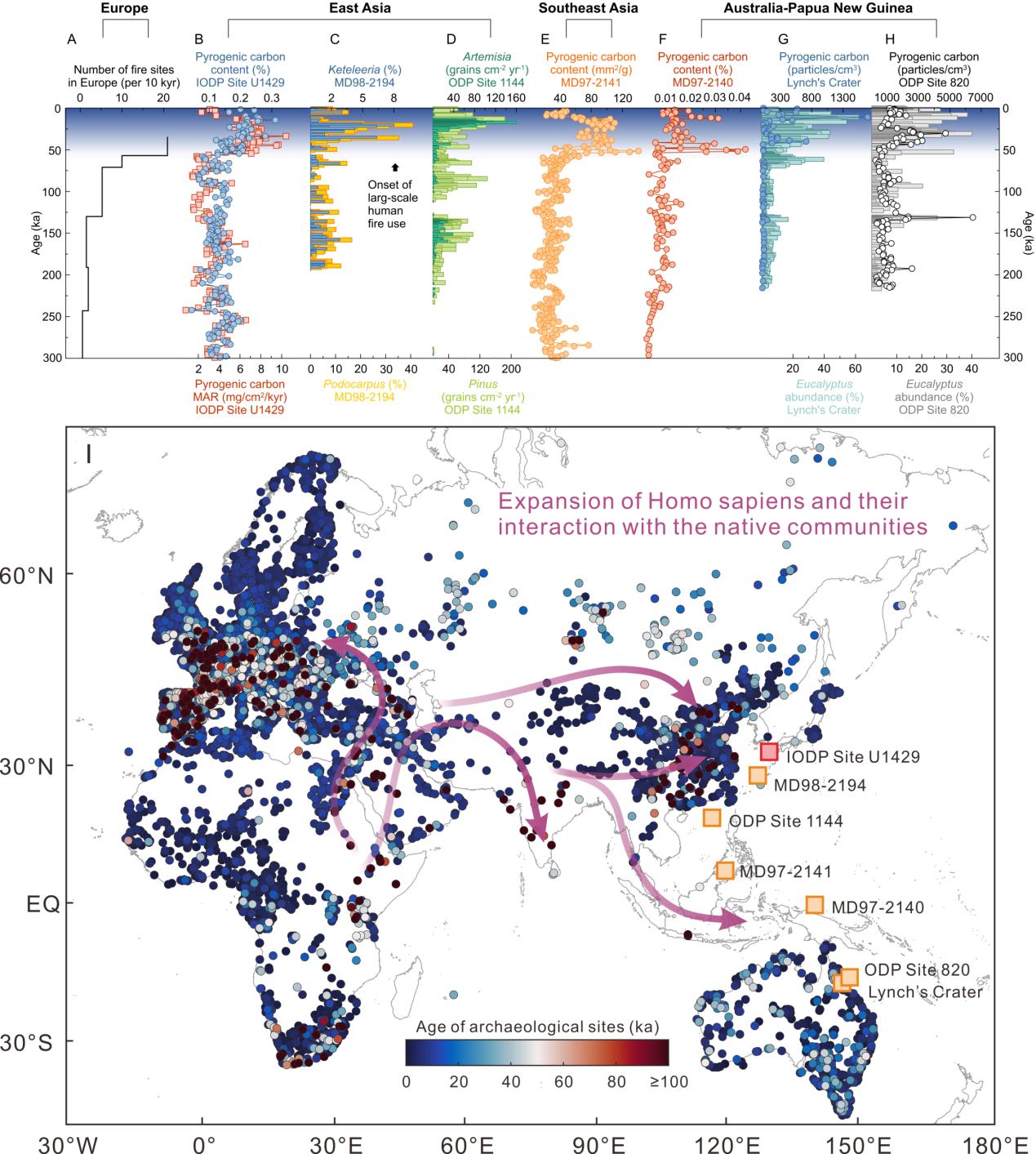Fire is an ancient natural phenomenon that has shaped our planet for over 400 million years. It alters habitats, affects the carbon cycle, and is closely linked to changes in climate and vegetation.
With the arrival of humans, fire began to transition from a purely natural force to one that could be harnessed to achieve specific goals. However, it has long been unclear when humans started using fire extensively to regulate their lives and significantly influence fire occurrences.
To address this question, researchers from the Institute of Oceanology of the Chinese Academy of Sciences (IOCAS), alongside collaborators from China, Germany, and France, analyzed the pyrogenic carbon record in a 300,000-year-old sediment core from the East China Sea.
"Our findings challenge the widely held belief that humans only began influencing environment with fire in the recent past, during the Holocene," said Dr. ZHAO Debo, the study's corresponding author.
This study, published in the Proceedings of the National Academy of Sciences (PNAS), highlights the presence of charred plant remains-known as pyrogenic carbon-formed when vegetation burns but is not completely consumed by fire. The research reveals a notable increase in fire activity across East Asia approximately 50,000 years ago. This finding aligns with earlier reports of heightened fire activities in Europe, Southeast Asia, and the Papua New Guinea-Australia region respectively, suggesting a continental-scale intensification of fire use during this period.
Paleoanthropologists who endorse the theory of evolution suggest that the common ancestors of all modern humans originated in Africa around 300,000 years ago, with Homo sapiens first emerging during this period. Between 70,000 and 50,000 years ago, Homo sapiens migrated from Africa to Europe, Asia, Southeast Asia, and Australia, eventually replacing local ancient human populations.
The study highlights that this global rise in fire use coincides with the rapid spread of Homo sapiens, increasing population densities, and a greater reliance on fire, particularly amid cold, glacial conditions. During this period, fire not only facilitated cooking-allowing for more efficient absorption of nutrients from food-but also provided protection against predators and helped humans survive in extreme climates. This reliance on fire contributed to cultural advancements, technological innovations, and a significant impact on natural systems, especially the carbon cycle.
Humans likely began shaping ecosystems and the global carbon cycle through their use of fire even before the Last Ice Age. "Even during the Last Glaciation, the use of fire had probably started to reshape ecosystems and carbon fluxes," added Prof. WAN Shiming, another corresponding author.
These conclusions have significant implications for understanding Earth's sensitivity to human impacts. If human fire management altered atmospheric carbon levels tens of thousands of years ago, current climate models may underestimate the historical baseline of human-environment interactions.

Fire history of Europe, East Asia, Southeast Asia and Papua New Guinea-Australia and age distribution of archaeological sites since the last 300,000 years. (Image by IOCAS)






